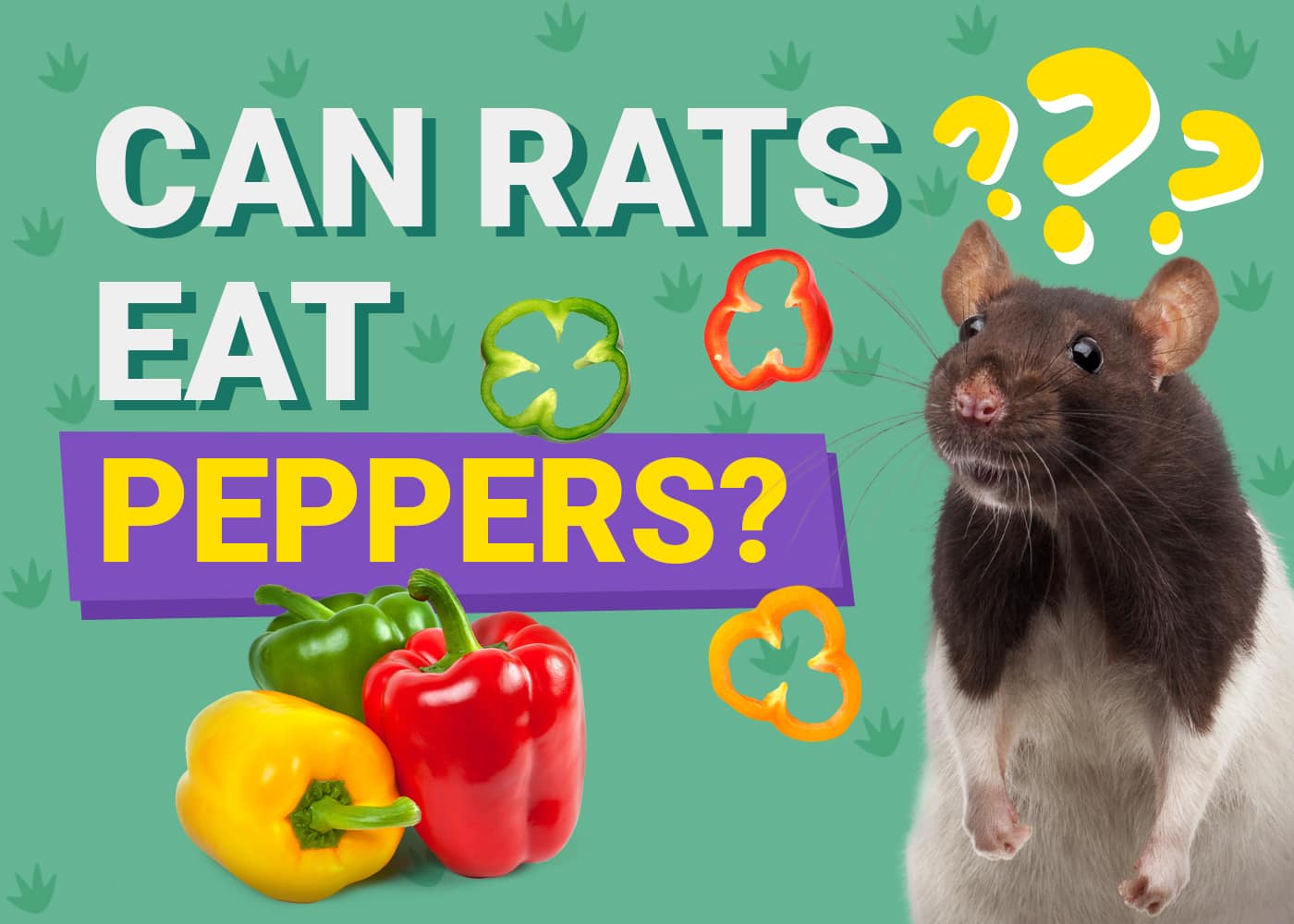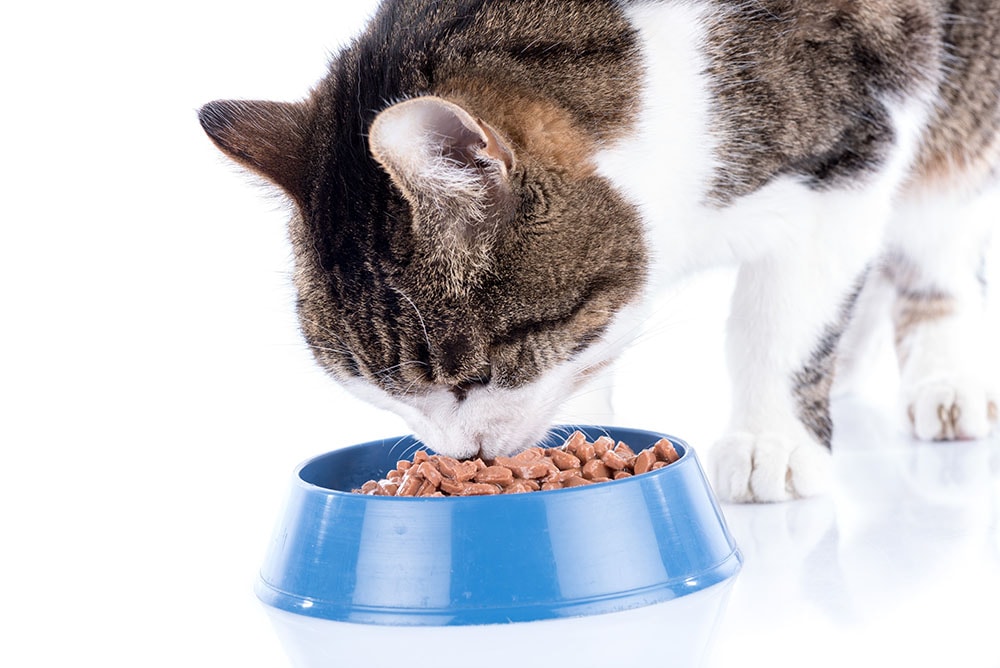VET APPROVED

The information is current and up-to-date in accordance with the latest veterinarian research.
Learn more »Rats are cute, furry little critters that can make great pets. But they are also quite curious and will try to eat just about anything. You might be surprised to learn that rats can even eat bell peppers!
Here, we tell you more about a rat’s typical diet, where bell peppers fit into their diet (if at all), and how you can or should offer these to your pet.

What Do Rats Eat in the Wild?
Rats are omnivorous creatures that are not known to be picky eaters. They have an incredible capacity to adapt to an environment and eat what is available. A rat in the Mexican desert will eat cacti and grass, for example, while a rat living in an American barn will eat grains from nearby agriculture fields. Some rats even eat meat!
What Do Rats Eat as Pets?
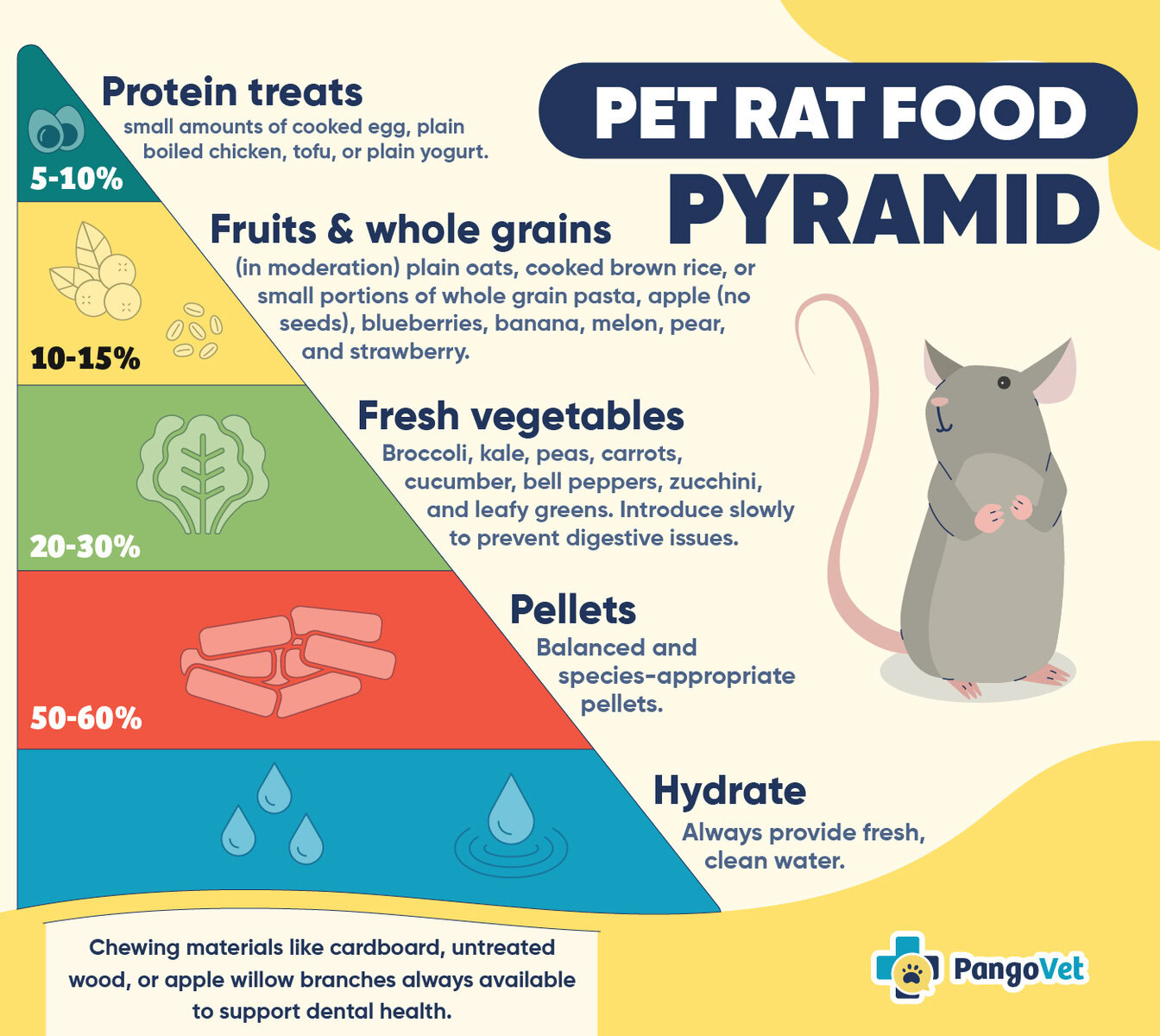
A pet rat’s diet needs to be more regulated than that of a wild rat. Although pet rats may readily gobble up most foods offered to them, they do so because they are intrinsically opportunistic scavengers compatible with an omnivorous diet. In the wild, rats are prey for many species, so having adaptable meal preferences is considered advantageous, as it enables them to survive as long as possible and by proxy, reproduce as much as possible.
A pet rat given a buffet of items to choose from may quickly start picking out their favorite foods and consuming them first. They also don’t get nearly as much exercise as a wild rat does, given that they are likely not housed in an enclosure that mimics the home range of a wild rat, which may travel several miles every day in search of food. This is further complicated by the fact that a pet rat doesn’t have to search or hunt for their food either. Basically, offering your pet rats anything in too-large a quantity will quickly lead to health issues for them.
The current dietary recommendation for a pet rat is as follows.
- Pellets: A pellet food formulated specifically for pet rats (not lab rats) should form the bulk (around 60–75%) of your pet’s diet.
- Fiber Sources: Starchy, fibrous vegetables, such as bok choy, broccoli, or hay, should complement your rat’s diet (around 15–25%)
- Fruits, Seeds, and Grains: These should only be considered as treats and offered sparingly, not on a daily basis.
These guidelines are generalized for healthy adult pet rats that are at a normal weight and not reproducing. It’s always best to consult your veterinarian for a dietary plan tailored specifically to your pet.
Pet rats can safely consume food intended for other animals (such as cat food). However, this isn’t considered appropriate for them on a long-term basis.
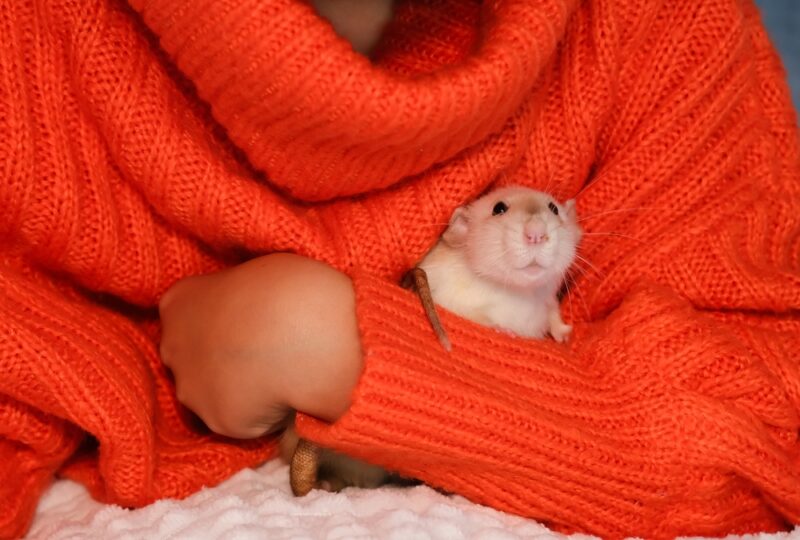

Do Rats Like Bell Peppers?
Anecdotally, rats do enjoy bell peppers and will consume them whenever they are offered. Bell peppers are not toxic to these rodents, and have even been used in experimental studies involving rats.1
Can You Feed Your Rat Any Kind of Bell Pepper?
All colors of bell peppers are safe for rats. However, none are considered healthy for them. Botanically, bell peppers are considered fruits. They don’t offer enough fiber to justify their inclusion in your rat’s diet in high amounts.
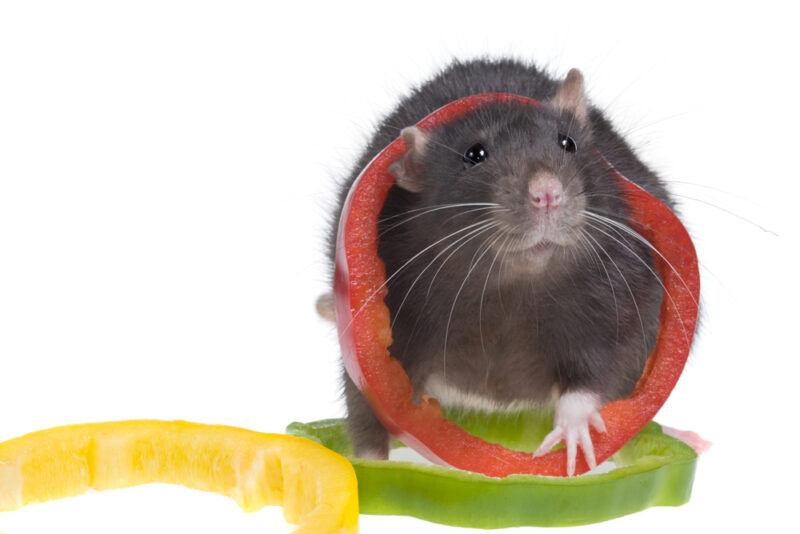

Are Bell Peppers Good for Rats?
Bell peppers are safe but not that nutritious or healthy for pet rats. They’re well-known for their high vitamin C content, which makes them appealing to us humans because we can’t make this vitamin on our own. Rats can, however, so while adding it to your rat’s diet might seem like a good idea, it’s important to note that more of a vitamin isn’t always better.
It is believed that supplementing a rat’s diet with vitamin C might be beneficial for them in scenarios where their diets are otherwise deficient in certain nutrients, but otherwise, excessive vitamin C intake can be detrimental to their health.2
Feeding Your Rats Bell Peppers
Bell peppers should be considered treats for your pet rat. When serving them, ensure that they are raw and fresh. The peppers should also be thoroughly washed and then sliced into acceptable sizes for your rat.
For a healthy pet rat, a piece around ½ an inch in length and ¼ an inch in width should be sufficient as an occasional snack. Since fresh produce can quickly spoil, you should remove any uneaten bell peppers from your rat’s enclosure after a period of no more than 4 hours.

Conclusion
Peppers are acceptable for a rat to eat, albeit as occasional treats. They should definitely not be something that you offer them as a daily supplement. Just like us, rats are individual biological entities, so it’s best to consult your veterinarian for a meal plan that works specifically for your pet.
You may also be interested in:
